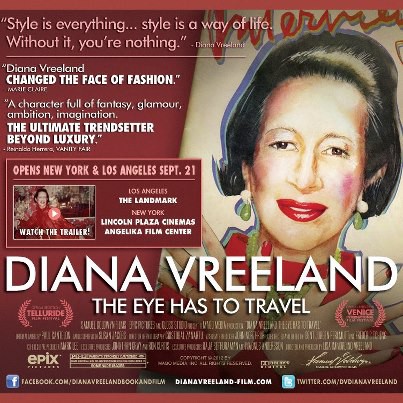Lisa Immordino Vreeland loved Diana Vreeland before she married her grandson. Even though they never met she paints a glorious portrait of a unique woman who was a driving force in the fashion and cultural world in NY in the 50s and 60s. She was the editor of Harper’s Bazaar for 25 years and then did a stint at Vogue and then at 70 she put the Met’s Costume Institute on the map. Her energy and enthusiasm is infectious as is this engrossing documentary.
Director Lisa Immordino Vreeland answered some questions about the film by email.
Women and Hollywood: What drew you to tell the story of Diana Vreeland?
Lisa Immordino Vreeland: It needed to be redefined for a new generation. People need to understand why Mrs. Vreeland continues to resonate today and why she will continue to influence people throughout the world.
WaH: As a person who married into the Vreeland family did you feel an additional sense of responsibility with her story?
LIV: Luckily I felt that I was not compromised at all!
WaH: She was a larger than life figure yet younger generations don’t know much about her. What is the one thing you think that people should know about her?
LIV: There are so many things that people should know about her but I think the most important is about believing in yourself and being passionate about everything you do in life.
WaH: What was the most unexpected thing you learned about Diana Vreeland while making the movie?
LIV: I interviewed over 60 people and it was incredible how she touched so many lives. Many of the interviewees were so touched by her and spoke about how important she was in their life — not only because she mentored them but she was there consistently as a friend.
WaH: What was the biggest challenge for you in making the movie?
LIV: I would say that financial challenges continued to come up consistently.
WaH: What advice would you impart to other first time filmmakers?
LIV: Believe in yourself and the message you want to give in the film you are making.
WaH: Do you think she was a feminist?
LIV: I don’t think that she ever tried to push forward a message of feminism because there were many other important women in that time who did that. She set an example which was important enough for many women.






